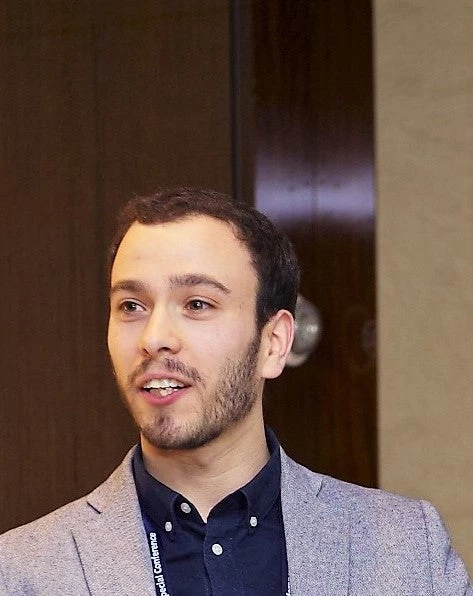Note: A more recently updated version of the numbers and chart below is available here.
As the new year brings some hope for the fight against COVID-19, we are looking back and taking stock of the effect of the pandemic on poverty in 2020. In October 2020, using the June vintage of growth forecasts from the Global Economic Prospects, we estimated that between 88 and 115 million people around the globe would be pushed into extreme poverty in 2020. Using the January 2021 forecasts from GEP, we now expect the COVID-19-induced new poor in 2020 to rise to between 119 and 124 million. This range of estimates is in line with other estimates based on alternative recent growth forecasts.
As in our earlier estimates, the number of COVID-19-induced new poor is calculated as the difference between poverty projected with the pandemic and poverty projected without the pandemic. To predict poverty in the former we use the GEP growth forecasts from January 2021, and for the pandemic free world, we use GEP growth forecasts made in January 2020.[1] It is important to note that while we are now ‘looking back’ at 2020, our estimates are still relying on extrapolations of household surveys that pre-date 2020.
The estimated increase in global poverty in 2020 is truly unprecedented. Figure 1 shows the annual change in the number of global extreme poor from 1992 to 2020. Each bar represents the net number of people who have either moved out of extreme poverty if they were poor in the last year or moved into extreme poverty if they were not poor in the previous year. Before COVID-19, the only other crisis-induced increase in the global number of poor in the past three decades was the Asian financial crisis, which increased extreme poverty by 18 million in 1997 and by another 47 million in 1998. In the two-decades since 1999, the number of people living in extreme poverty worldwide has fallen by more than 1 billion people. Part of this success in reducing poverty is set to be reversed due to the COVID-19 pandemic. For the first time in 20 years, poverty is likely to significantly increase. The COVID-19 pandemic is estimated to increase extreme poverty by between 88 million (baseline estimate) and 93 million (downside estimate) in 2020. Considering those who would have otherwise escaped extreme poverty but will not due to the pandemic (i.e. 31 million in 2020), the total COVID-19-induced new poor in 2020 is estimated to be between 119 and 124 million.
Figure 1: Annual change in the number of extreme poor (in million), 1992-2020
Utilizing various growth forecasts that have been available in 2020, Figure 2 shows both the change in the estimated number of COVID-19-induced new poor in 2020 and the contributions of various regions. The worsening impact of the pandemic has drastically changed our projections over the course of this year, especially when comparing with the April growth rates (while the increase from June to January GEP is smaller). This has been driven primarily by a worsening forecast for South Asia, which has also changed the regional profile of the COVID-19-induced new poor. It is important to note that the poverty estimate in South Asia in recent years, even before the pandemic, is subject to considerable uncertainty due to the absence of new household survey data for India since 2011/12.[2]
Using the growth forecast from April 2020 under the $1.90-a-day poverty line, we estimated that 62 million would fall into extreme poverty globally in 2020, with South Asia and Sub-Saharan Africa each contributing roughly two-fifths. We revised the global estimate to between 88 and 115 million using the June-2020 growth forecast, with about half of the new poor residing in South Asia. Using the January 2021 forecast, we now estimate between 119 and 124 additional poor globally with around 60% living in South Asia.
The increase in the number of poor is also visible at the $3.20 poverty line. At the $3.20 line, the global new poor using the GEP-baseline scenarios has increased from 175 million to 228 million (from June 2020 to January 2021) , again driven by South Asia. At the $5.50 line, we do not find a worsening of the global estimate, as our new estimates actually lie within the range we estimated using the June GEP. This is largely explained by a better than expected outlook for East Asia and Pacific, counteracting the upward revision in South Asia.
Figure 2: COVID-19-induced new poor in 2020, using various growth vintages
There is little doubt that 2020 has been an exceptionally difficult year in recent history. While there has been progress in the development of vaccines, it doesn't appear that the increase in poverty of this past year will be reversed in 2021. Figure 3 presents the nowcast of poverty up to 2021 using the pre-COVID-19 and the COVID-19 baseline and downside scenarios using the GEP January 2021 forecast. As reported above, the pandemic-induced global new poor is estimated to be between 119 and 124 million in 2020. In 2021, the estimated COVID-19-induced poor is set to rise to between 143 and 163 million. While the estimates for 2021 are very preliminary, it goes to show that for millions of people around the globe this crisis will not be short-lived. Following the Asian financial crisis (see Figure 1), 42 million people moved out of extreme poverty in 1999 and, on average, 54 million people have moved out of extreme poverty annually in the two decades before the pandemic. We hope that when we finally take stock of 2021 in a year’s time, the coming year will have fared much better for poverty reduction than what we expect at the start of the year. However, the continued worsening of growth outlooks that we observed in the past year could suggest otherwise. Increasing inequality is another downside risk that we have not explored here (we have assumed that inequality remains unchanged), but discussed in more detail elsewhere. Perhaps the only certainty in this crisis is that it is truly unprecedented in modern history.
Figure 3: Nowcast of extreme poverty, 2015-2021
We gratefully acknowledge financial support from the UK government through the Data and Evidence for Tackling Extreme Poverty (DEEP) Research Programme.
[1] As before, we use a 0.85 global pass-through to adjust the growth rates for the projected years, i.e. 2019-2021 (for details on the pass-through calculation see Lakner et al. 2020). We use the most recent January-2021 GEP forecast for all scenarios in 2019.
[2] Our projections depart from the India estimate that is included in the global poverty estimate for 2017. For details on the India estimate, see Castaneda et al. (2020) and Poverty and Shared Prosperity 2020 (Chapter 1, box 1.2).






Join the Conversation